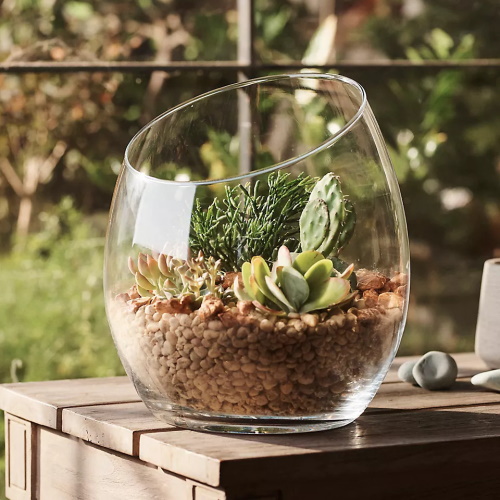Types of moss – 5 evergreen plants for ground cover, containers and more
Moss is a versatile plant to grow, bringing interesting color and texture to a range of planting schemes
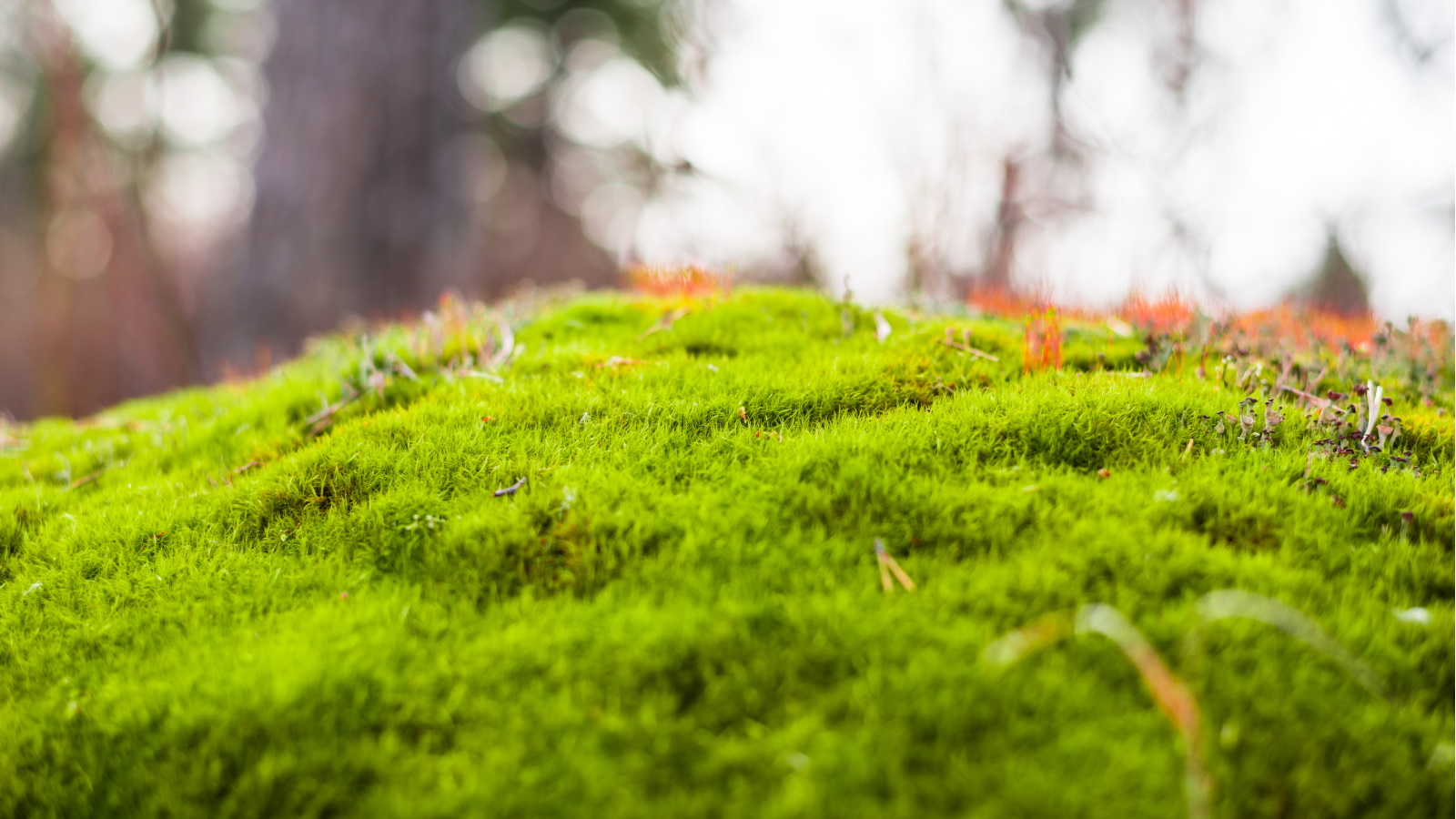

Moss is one of those plants often overlooked and many even choose to remove it from their yard. However, we've noticed moss become a bit of a trend in gardens this year, with gardeners taking advantage of this plant's evergreen nature and unique texture.
If you've considered landscaping with moss, you'll be interested to hear there are so many types of moss you can work with. Many of them are shade-lovers, but some types of moss enjoy a sunny position.
You can use moss in containers, on the ground, vertically and so much more - it's even possible to grow moss indoors. Here, we've pulled together some of the best types of moss to grow, each beautiful in their own way.
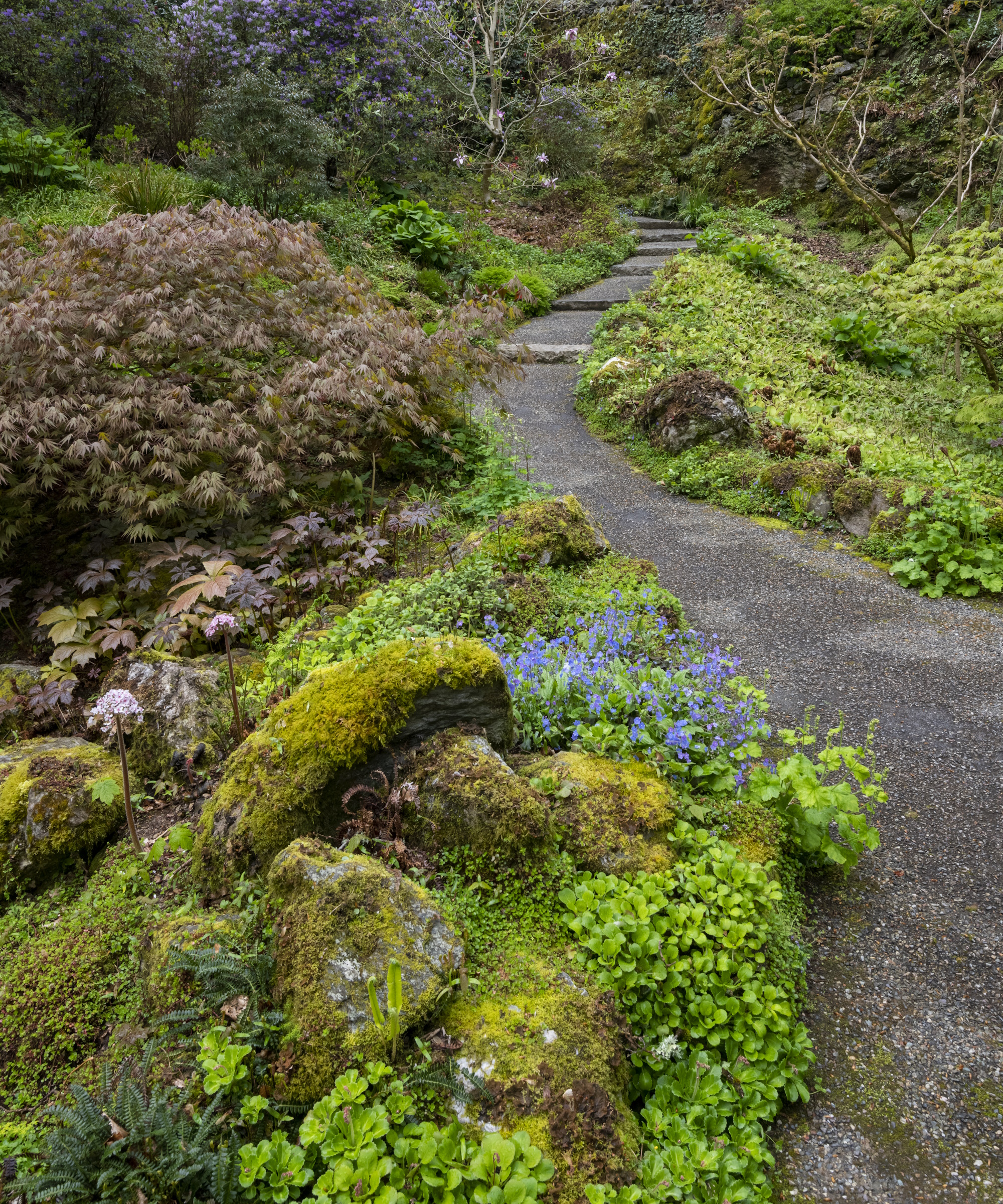
5 types of moss
When you think of growing moss, your mind likely goes to some common types of moss that crop up in shady, damp areas. Well, there's a lot more moss can offer than you might expect. Here are five of the best types of moss to grow.
1. Pincushion moss

- US hardiness zone: 3-9
- Position: Partial sun
- Best for: Terrariums and woodland planting
Pincushion moss, or Leucobryum glaucom, is found around the world, growing in woodlands and wetlands. It's the perfect choice if you're creating a woodland garden in your yard.
'This moss is a also great variety to keep in your terrarium, as it is acrocarpous, which means it grows in tight clumps,' says Lotte Berendsen, a certified botanist from the PlantIn app.
'Since it grows in dense clumps, pincushion moss is very easy to shape and sculpt. Simply break it apart using your hands and press it into your desired spot,' she adds.
Design expertise in your inbox – from inspiring decorating ideas and beautiful celebrity homes to practical gardening advice and shopping round-ups.
Unlike mosses used as ground cover plants for shade, pincushion moss prefers more sunlight exposure. 'Bright, indirect light is the best option. Direct, harsh sunlight can cause sunburn, so this is best avoided,' Lotte advises.
You should keep this moss consistently moist, otherwise you might notice it turning brown.
'When kept consistently moist, Leucobyrum glaucum will help increase humidity for indoor plants in your terrarium as it holds water like a sponge, creating a damp environment surrounding it,' Lotte adds.
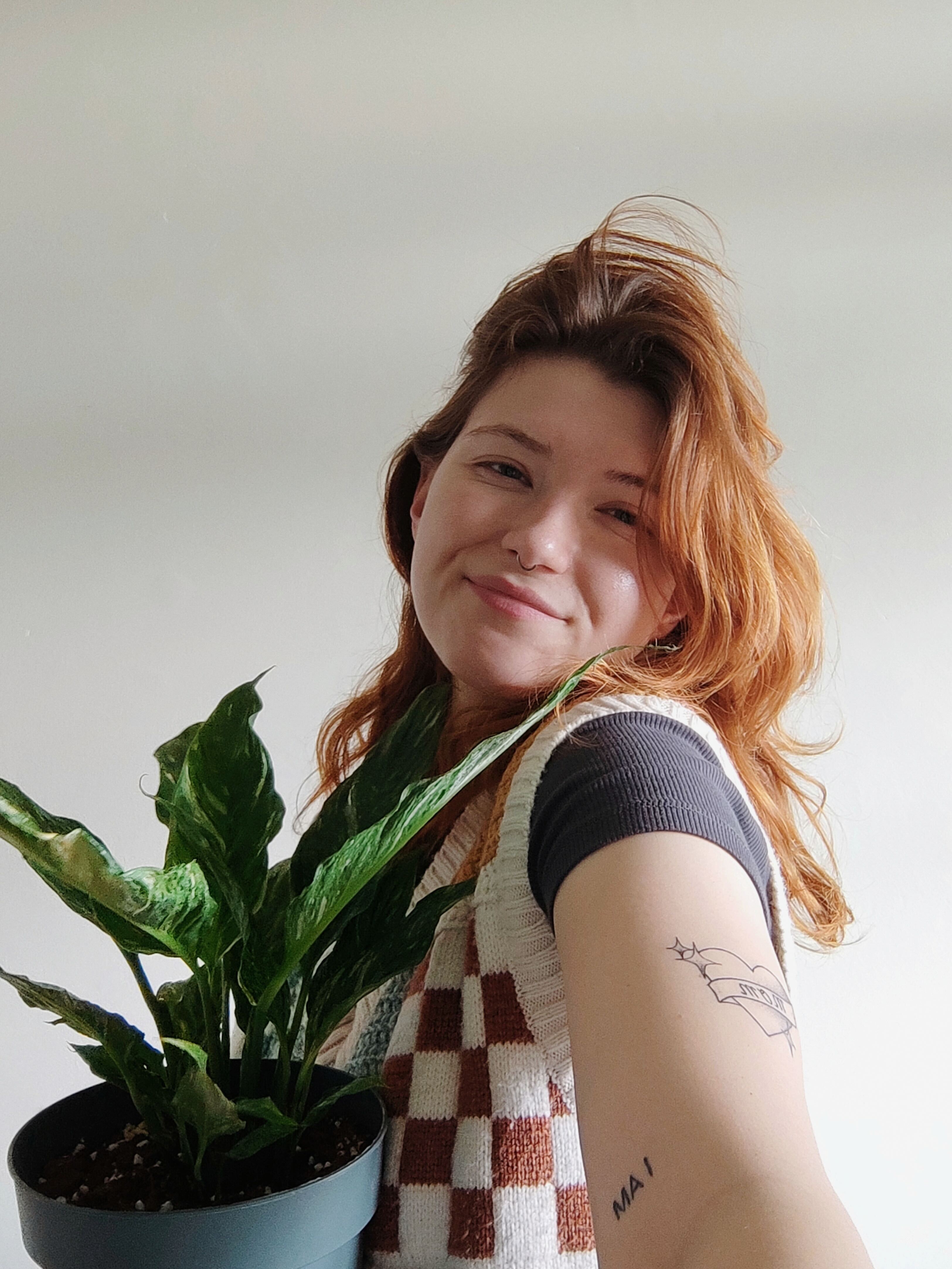
Lotte is a gardening enthusiast, writer, and plant expert at PlantIn, where she provides customers with detailed care and treatment plans
2. Rock moss
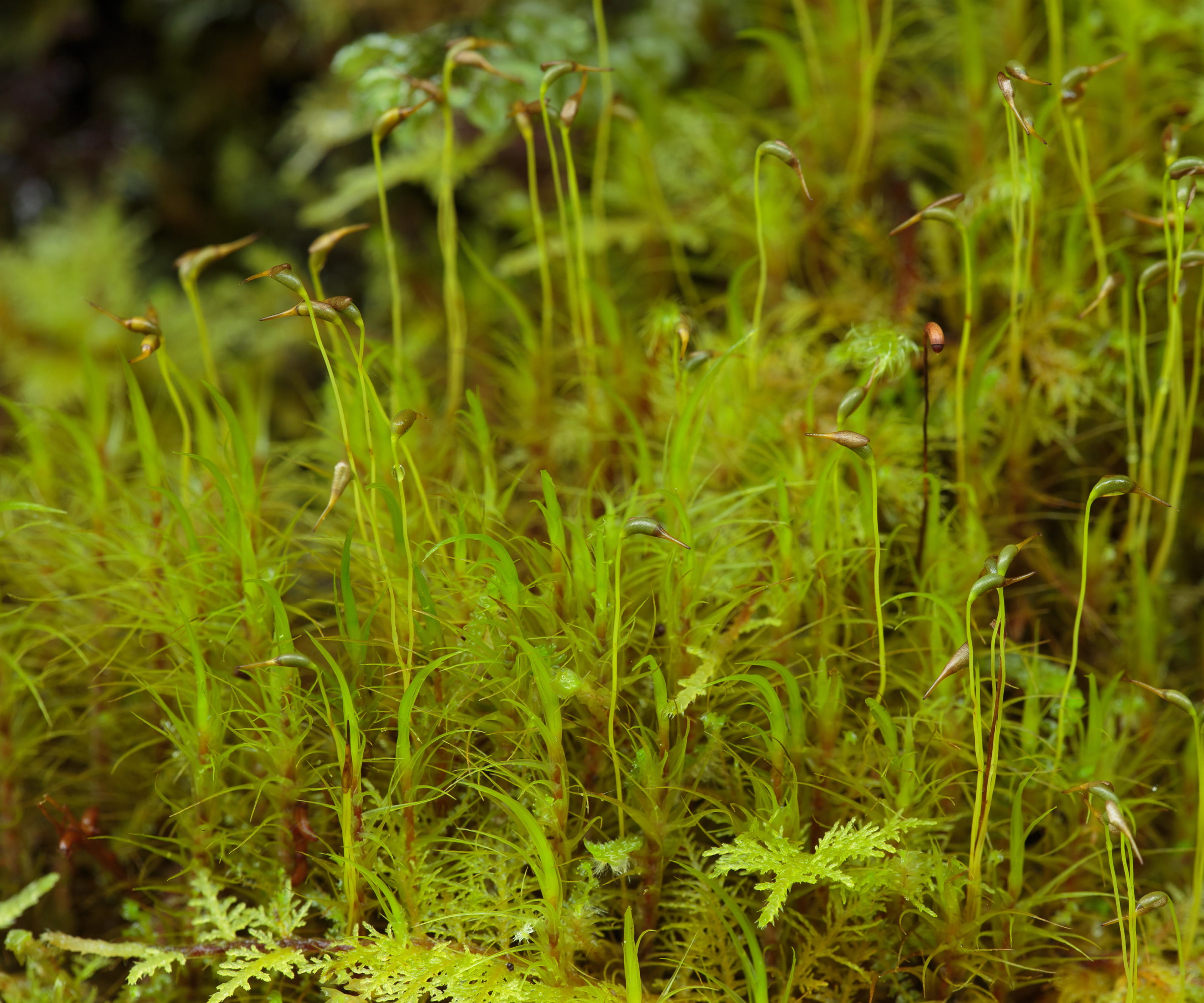
- US hardiness zone: 3-9
- Position: Partial sun
- Best for: Rock gardens
If you love rock garden plants, add rock moss (Dicranum scoparium) to your list. Also known as broom forkmoss and mood moss, this moss can be found across most of the northern hemisphere.
'This is the moss we typically see on boulders in nature. It is easily transplanted to the soil but takes some effort to establish moss on other rocks,' says landscape design expert Scott Seargeant.
This moss is loved for the way it creates a soft carpet. It also has a more yellow hue, so it might trick you into debating whether there is lichen or moss growing in your yard.
If you do want to get rock moss growing on rocks in your yard, Scott has an easy hack for you:
'Many use a slurry of yogurt (at Walmart) and water. Use a new paintbrush and paint the yogurt slurry on the rock. Press the moss pieces onto the slurred rock,' he explains. 'Spray with water bottle or mist setting on hose nozzle. Keep it moist and in shade. In several weeks, the moss should start to adhere to the rock,' Scott adds.
This moss can grow well in part-shade, but prefers indirect light, so you might have to think carefully where to place your rock garden if your keen to use it.
'Watch for snails and slugs feeding on your rock moss,' Scott adds.

Scott is an International Consulting Arborist specialising in diagnosing tree conditions, providing treatment, recommendations, selecting appropriate trees for planting, and offering guidance on post-planting tree care. His services encompass tree selection, specialized fertilization, pruning, irrigation system improvement, root zone management, and pest and disease control.
3. Baby tooth moss
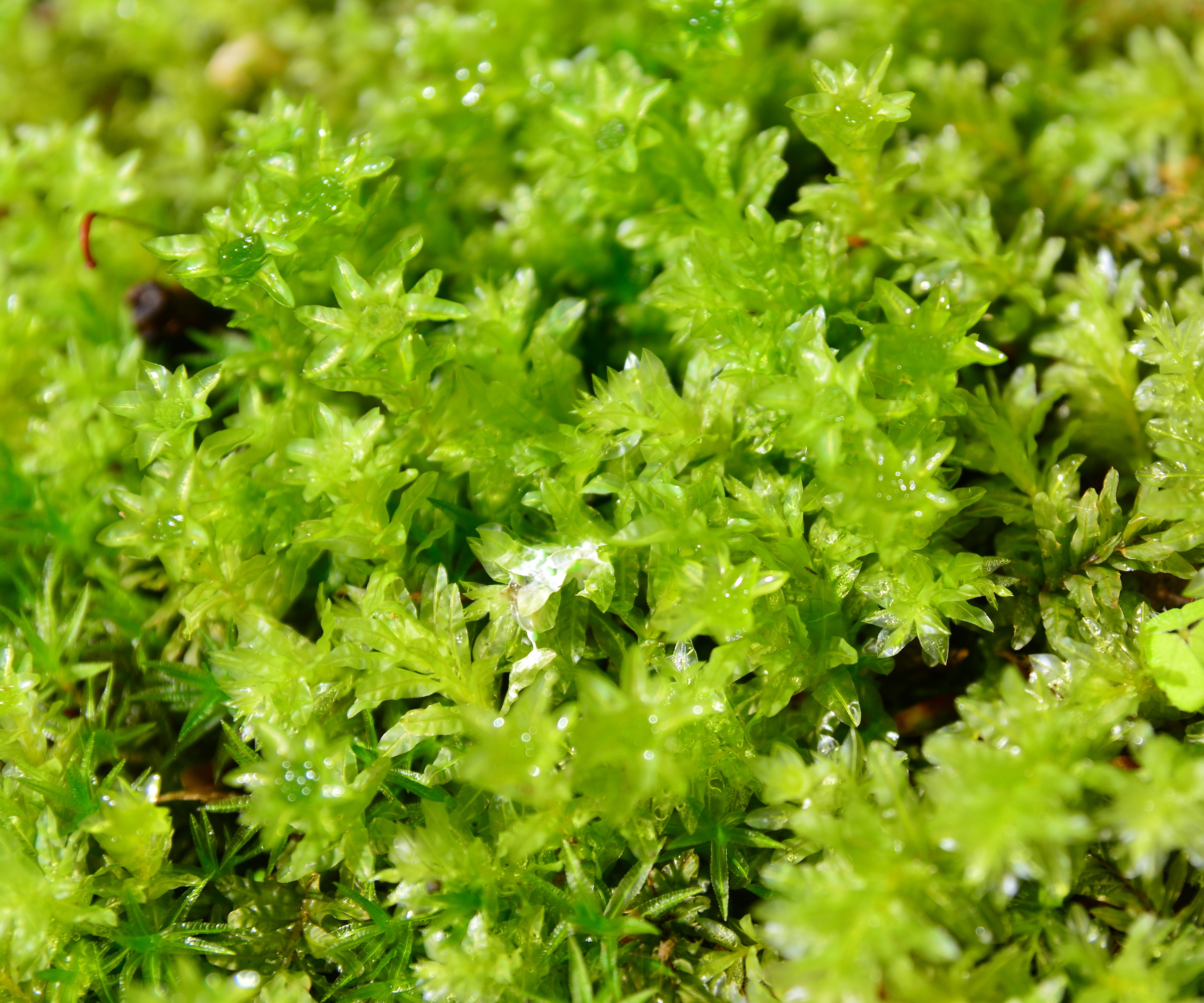
- US hardiness zone: 2-9
- Position: Shade
- Best for: Ground cover beneath trees
Baby tooth is a great choice of native plant when deciding which moss to grow in your yard. It originated in North America, found growing in dark, moist areas, often around the base of trees.
'Baby tooth moss thanks its name to the small, spiked leaves that resemble tiny ferns,' describes Lotte. 'It acts as protection for small wildlife and insects, giving it an essential role in the maintenance of native ecosystems,' she adds.
Those who are keen to maintain a wildlife garden in their yard should consider this type of moss for this reason.
'Baby tooth moss is very low-maintenance, as it does not require excessively high levels of humidity or light,' Lotte notes.
If you choose to make a terrarium with this moss, Lotte advises misting once a week to keep it at a happy moisture level. 'Due to their easy care requirements, these plants are ideal for open terrariums,' she adds.
4. Plume moss
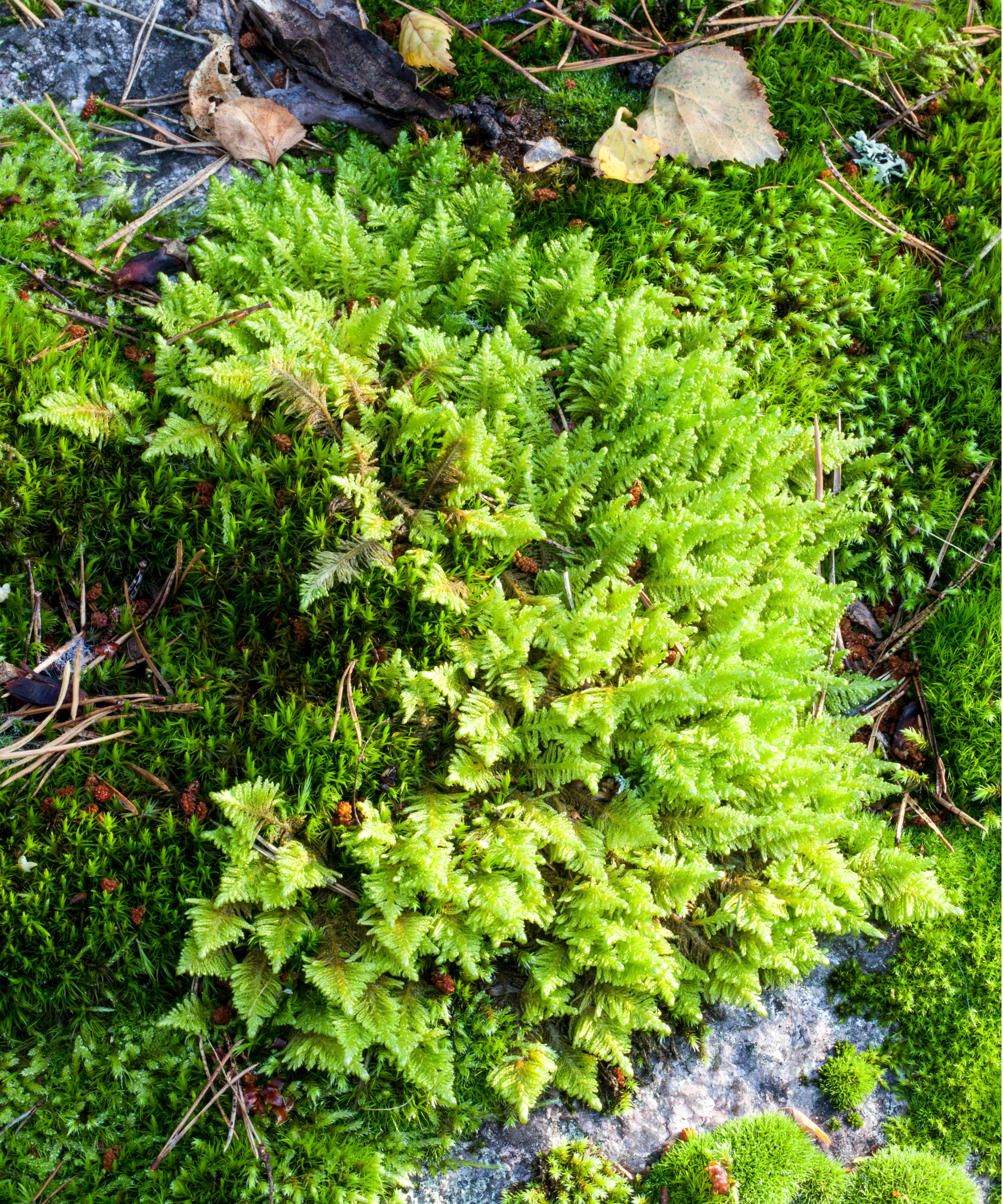
- US hardiness zone: 2-7
- Position: Shade
- Best for: Texture and vertical gardening
Plume moss (Ptilium crista-castrensis) is proof that moss doesn't have to be boring. As indicated by its common name, this moss grows in plumes of feather-like foliage. It's a forest garden plant, natively found across North America and northern Europe on trees, logs and the ground.
'It grows in dense, compact mats across the forest floors. In the wild, this moss plays a crucial part in the prevention of erosion and damage to the native habitat,' Lotte explains.
You can get plume moss to grow as part of a vertical garden by using this transplant netting from Amazon to hold it in place until it attaches to the desired surface, e.g. a tree trunk. Make sure to keep it moist to help it adhere by spraying it with this plant mister from Walmart.
'This moss thrives in low light and highly humid environments. It doesn’t appreciate drought, so avoid letting it dry out too much,' advises Lotte. 'Due to its unique shape and growth pattern, plume moss can be also be a great filler moss for planting schemes,' she adds.
You might even choice to pair plume moss with cutting garden flowers to add greenery to stunning floral arrangements.
5. Sphagnum moss

- US hardiness zone: 3-7
- Position: Partial sun
- Best for: Houseplants
You're probably familiar with sphagnum moss if you grow orchids or other indoor plants. It's commonly used to aid drainage of houseplants due to its ability to absorb water and keep a potting mix loose.
'Naturally you’ll find sphagnum moss in areas like marshes and wetlands,' says Scott. 'It is the moss that creates peat bogs,' he explains.
Peat bogs are areas of built-up decaying vegetation. They are harvested for peat to use in growing mediums, but this is not the most eco-friendly gardening way to grow plants - harvesting peat releases carbon into the atmosphere. Nevertheless, there are plenty of peat moss alternatives to explore - like this coco coir from Amazon.
FAQs
Does moss need soil to grow?
No, moss does not need soil to grow. This is because moss gets essential nutrients for plant growth from water through their leaves. Moss is able to attach itself to surfaces with its rhizoids (hairlike structures in place of roots). This allows you to grow moss on rocks, trees, walls and more.
These five types of moss show just how exciting this evergreen plant can be. Varying hues, shapes and growing habits make moss one of the most versatile plants to work with. In fact, you could try growing lots of types of moss together to create a moss garden.

Tenielle is a Gardens Content Editor at Homes & Gardens. She holds a qualification in MA Magazine Journalism and has over six years of journalistic experience. Before coming to Homes & Gardens, Tenielle was in the editorial department at the Royal Horticultural Society and worked on The Garden magazine. As our in-house houseplant expert, Tenielle writes on a range of solutions to houseplant problems, as well as other 'how to' guides, inspiring garden projects, and the latest gardening news. When she isn't writing, Tenielle can be found propagating her ever-growing collection of indoor plants, helping others overcome common houseplant pests and diseases, volunteering at a local gardening club, and attending gardening workshops, like a composting masterclass.
